Bright yellow clusters of golden spindles (Clavulinopsis fusiformis) are common across most of North America. They are a treat to see, with their brilliant coloring and unique form. Golden spindles are edible, but they are not commonly eaten because they are extremely bitter.
This vibrant fungus is widespread across North America, Europe, and Asia. Its role in the ecosystem is centered on its ability to decompose complex organic matter, making it crucial to maintaining the health of the forest floor.
- Scientific Name: Clavulinopsis fusiformis, synonym: Clavaria fusiformis
- Common Names: Golden spindle, golden fairy spindle, spindle-shaped yellow coral, yellow spindle coral, tongues of flame, and slender golden fingers.
- Habitat: Wide range of habitats, including woods under hardwoods or conifers, grasslands, and agriculturally unimproved grasslands.
- Edibility: Non-toxic, bitter
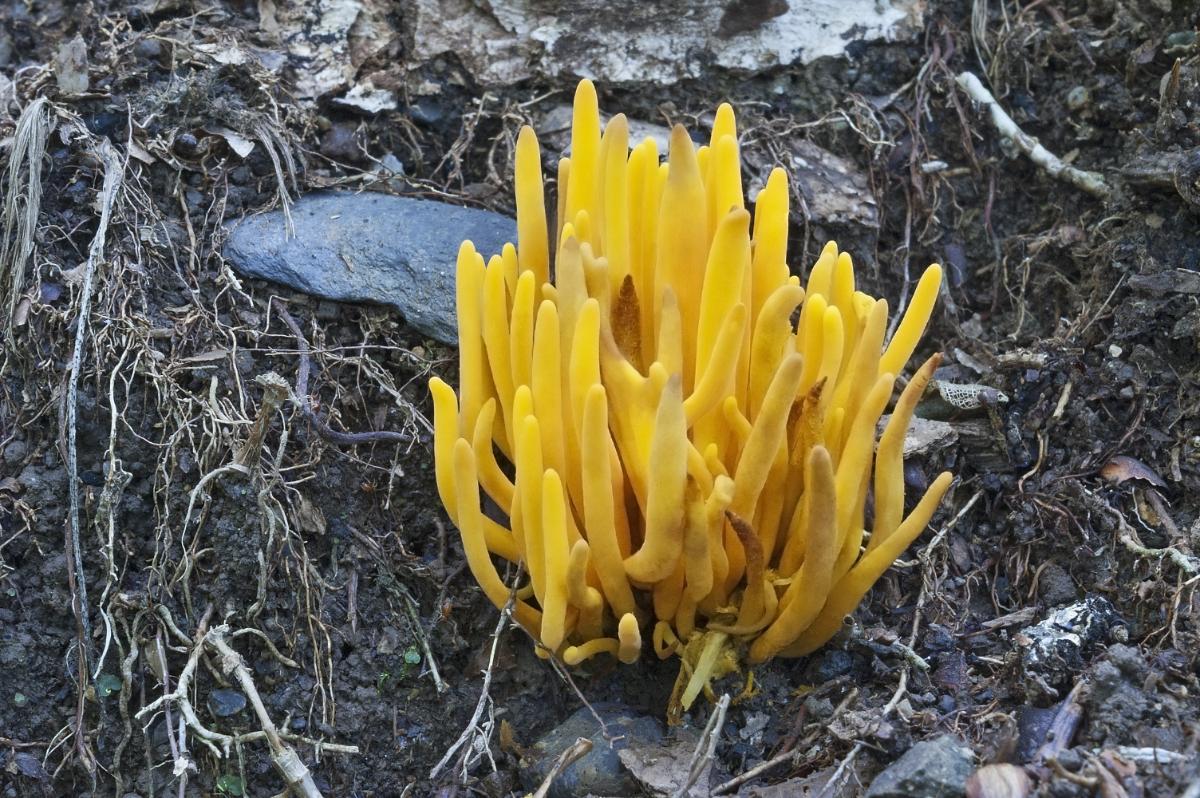
Jump to:
All About Golden Spindle Fungi
Golden spindles belong to the clavarioid fungi family. Their distinctive shape resembles clubs or corals – not very “mushroom” looking at all. These mushrooms can be found in various regions across North America, Europe, and Asia, where they play a vital role in the ecosystem by decomposing organic matter.
Over the years, golden spindles have acquired several common names, such as “golden spindles,” “spindle-shaped yellow coral,” and “golden fairy spindle,”
They were first described by the English botanist and mycologist James Sowerby in 1799. In 1950, it was moved to the Clavulinopsis genus by E.J.H. Corner, an English mycologist. The scientific name fusiformis is from the Latin and means “spindle-shaped.” It is believed that this mushroom is part of a species complex, meaning there are many species “hiding” in one. More research will probably separate this one out into several or many other species.
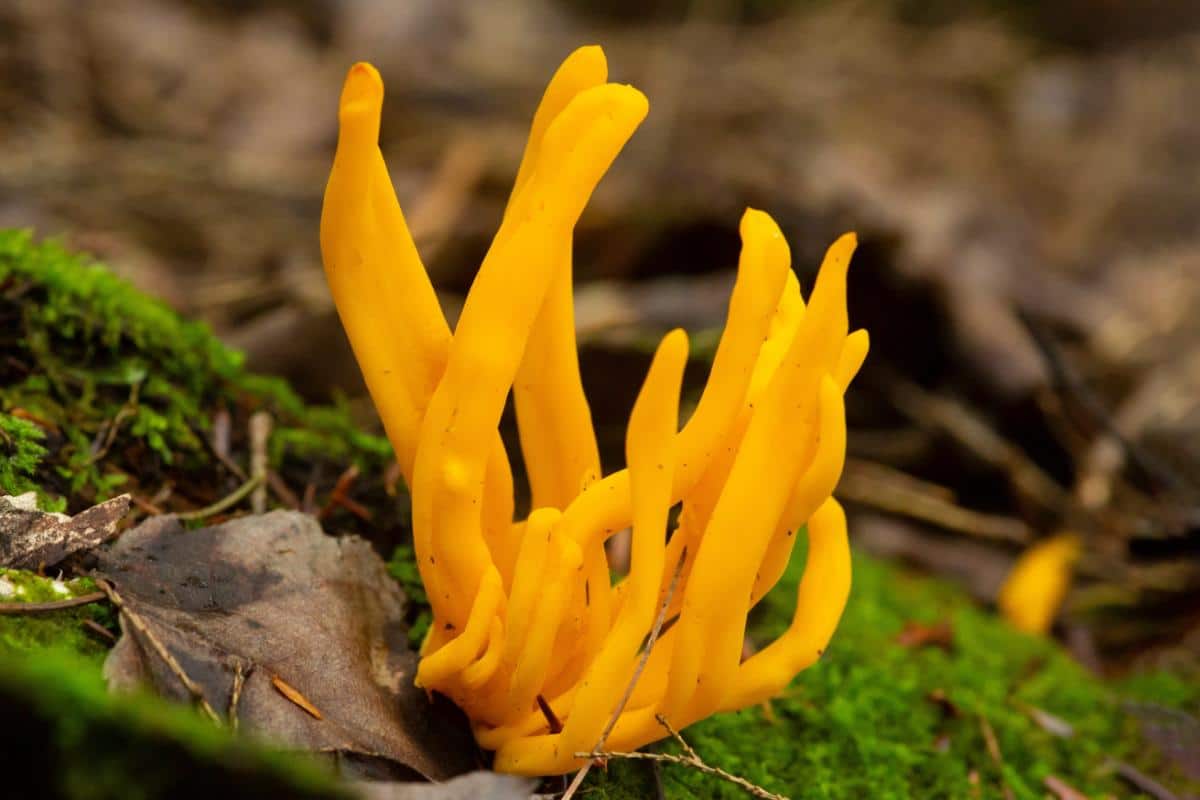
Golden Spindle Identification Guide
Season
These fungi are most commonly seen during the summer and fall seasons.
Habitat
Golden spindles can be found in a wide range of habitats, including woods under hardwoods or conifers, grasslands, and agriculturally unimproved grasslands. They grow from the ground; they do not grow on wood.
They commonly grow in dense clusters with fused bases and in large scattered groupings. The mushroom grows across North America but is more commonly distributed in the northern half. It also grows worldwide.
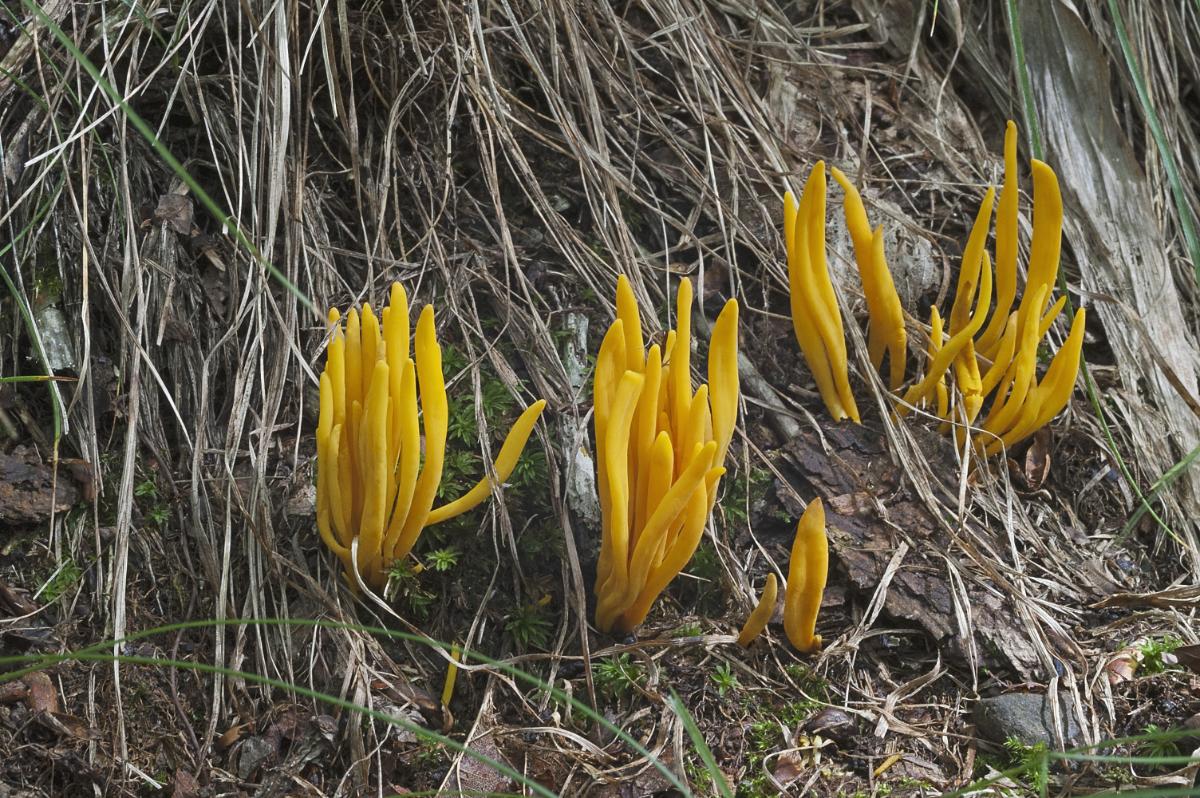
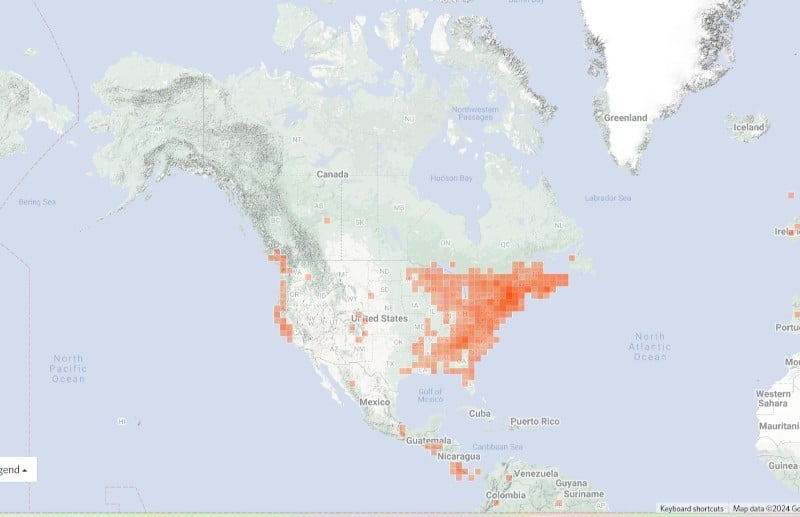
Identification
Body
Unlike many fungi, golden spindles do not have a traditional cap or stem. Instead, its fruit bodies are elongated cylindrical clubs. The clubs do not branch. They are often flattened in appearance and have a shallow vertical groove on one side that looks like a seam. The club tips are usually somewhat pointed.
These mushrooms are bright yellow to pale yellow or orange-yellow and often grow in dense clusters. With age, the color fades.
Golden spindle clubs fuse at the base, which is how they form clusters. The base of the stem is white. This species grows between 2 and 6 inches tall.
Flesh
The flesh of this species is thin and yellow, matching the exterior color of the fruiting bodies.
Odor and Taste
Golden Spindles don’t have a distinctive odor. However, they have a noticeably bitter taste.
Spore Print
The spore print of Golden Spindles is white.
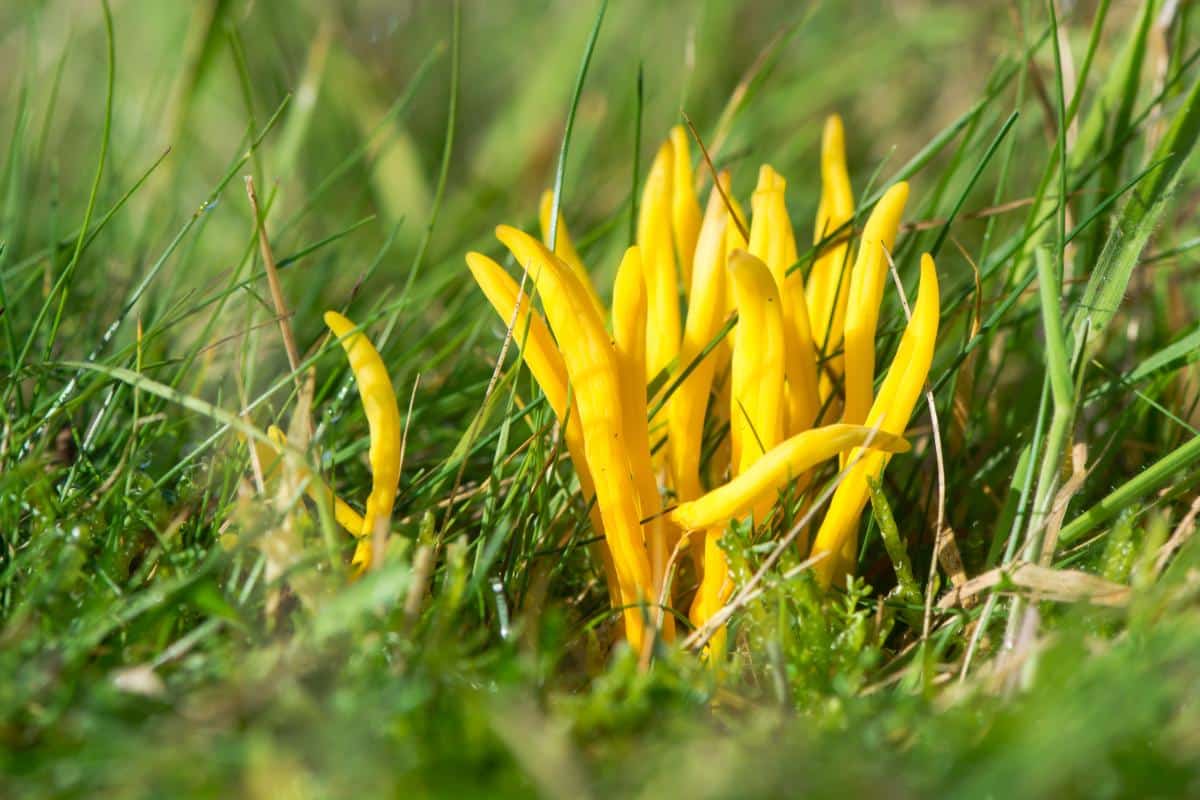
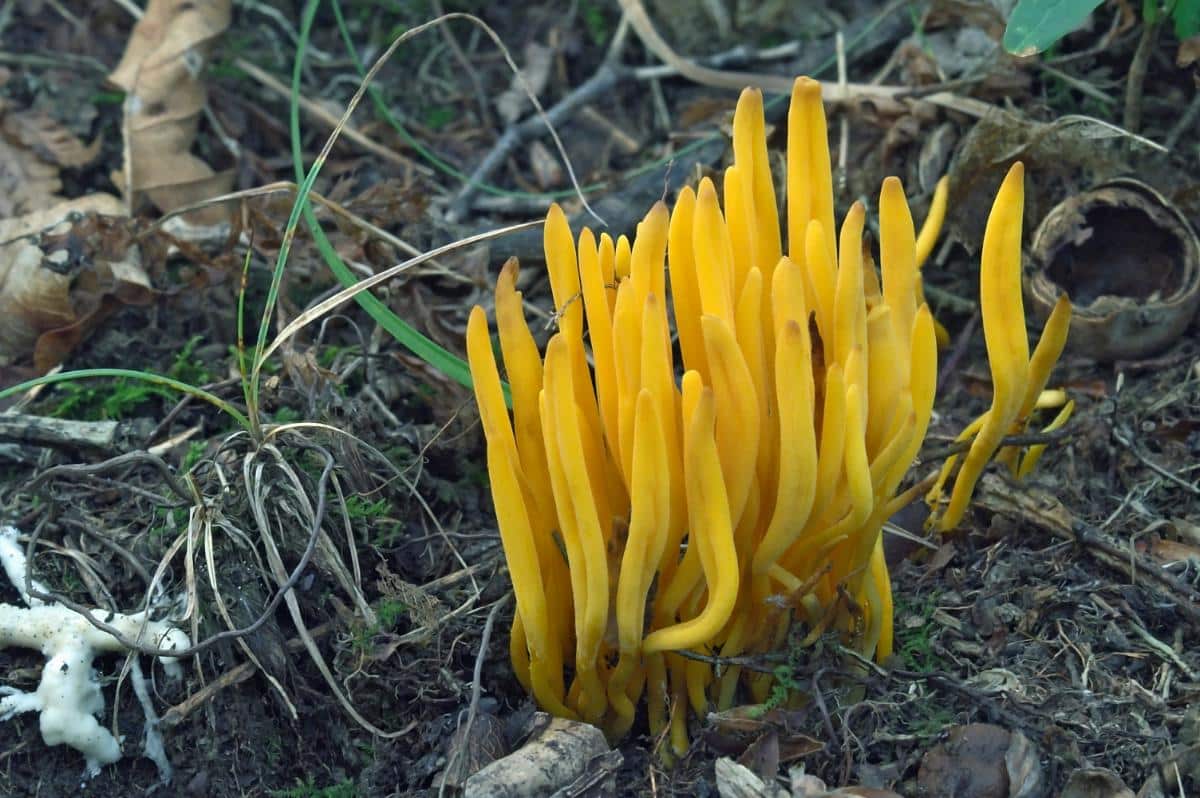
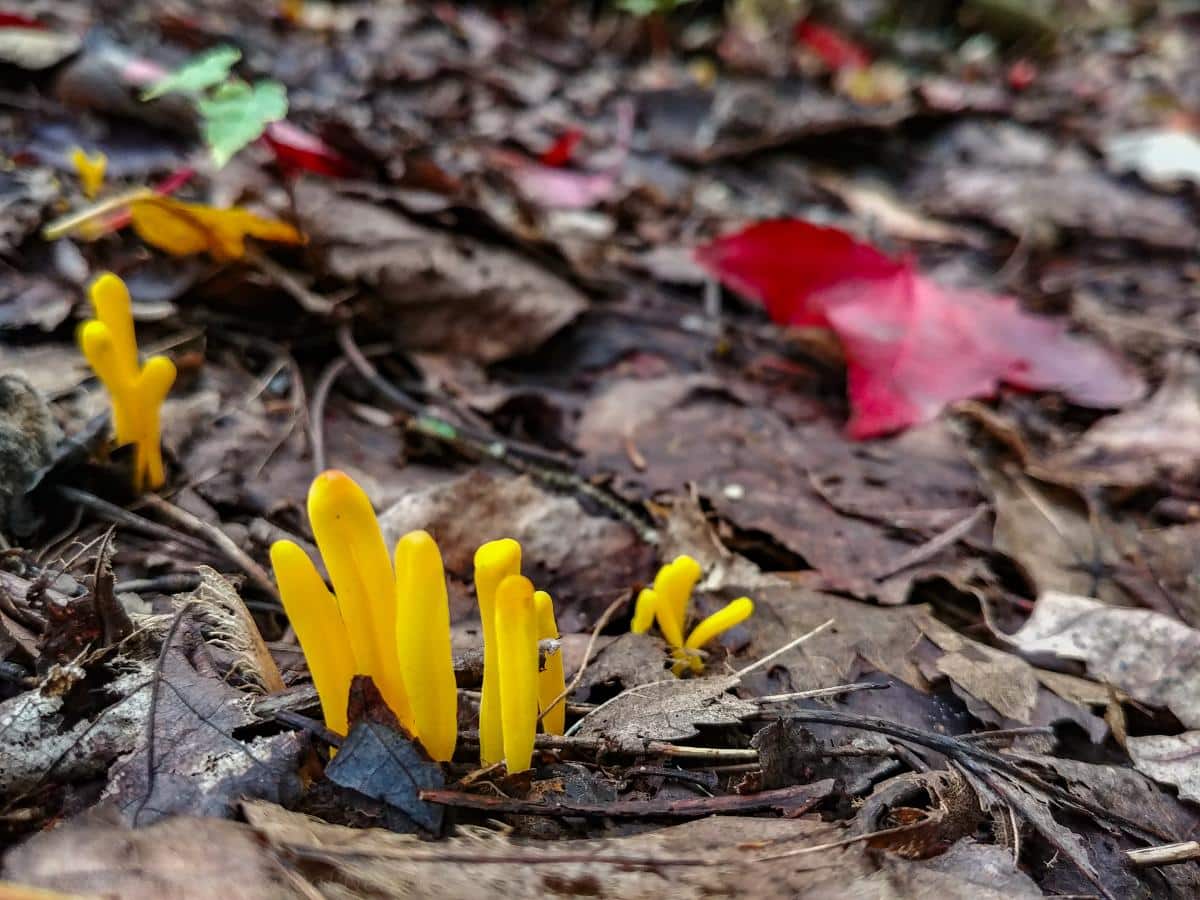
Golden Spindle Lookalikes
Yellow Club (Clavulinopsis helvola)
This species has similarly colored, simple fruit bodies but are typically smaller and grow singly or sparsely clustered. There are usually only a few clubs in each clump. This species is also less common than golden spindles.
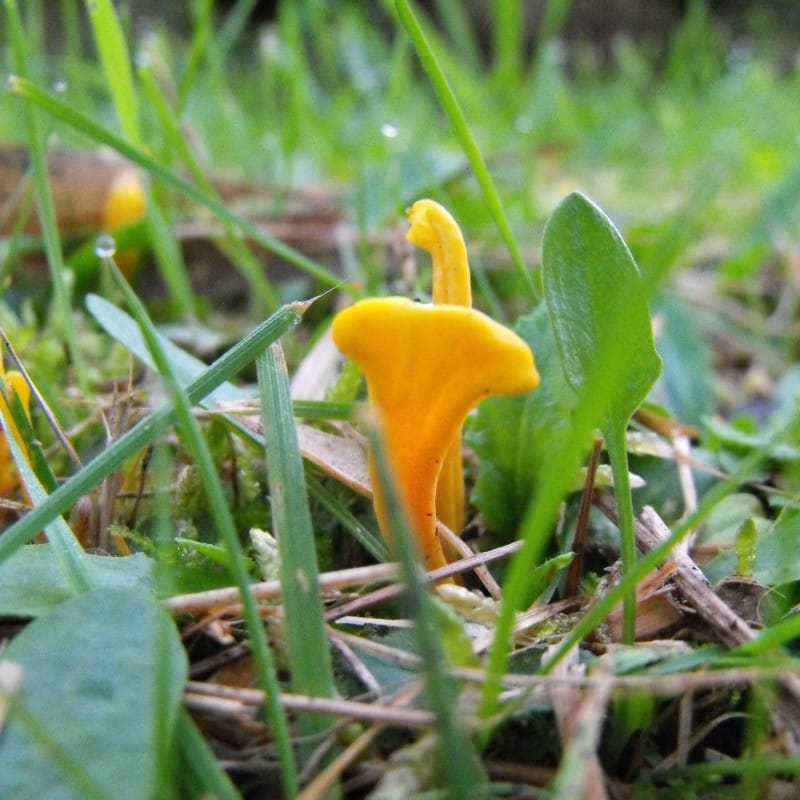
Golden Fairy Club (Clavulinopsis laeticolor)
This mushroom looks remarkably similar but is much smaller and doesn’t grow in such tight clusters. It rarely gets more than 2″ tall and is super fragile due to its size.
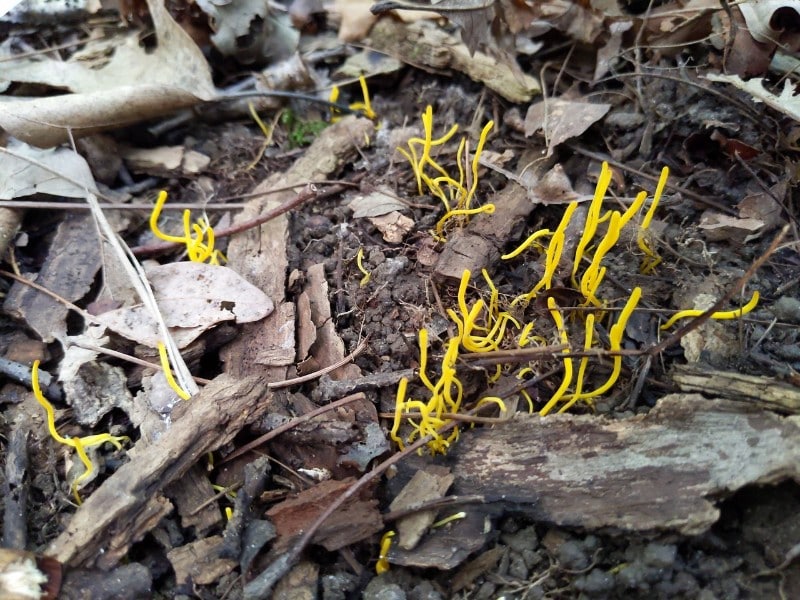
Apricot Club (Clavulinopsis luteoalba)
This species looks similar but is usually darker in color—the clubs are more orange than yellow. They are also typically smaller in size. It is only reported uncommonly in the PNW and parts of Canada.
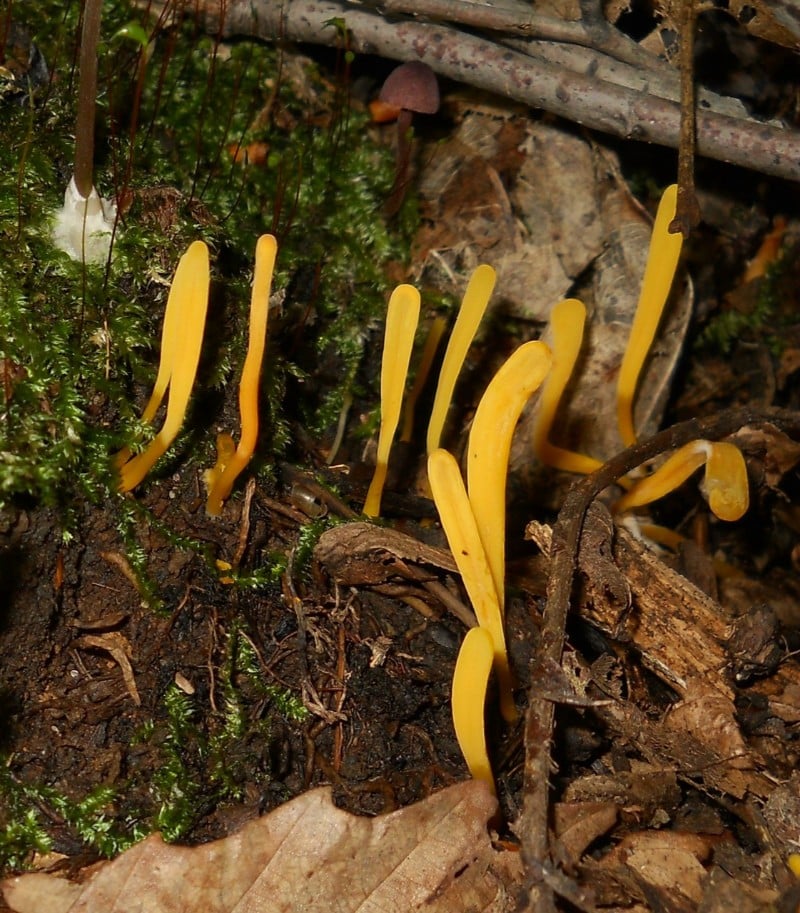
Jelly Antlers
These bright yellow to orange branching coral-like fungi look similar to golden spindles when they are young. Once the jelly antlers start branching, they’re easy to tell apart. Their flesh is also gelatinous, very unlike the flesh of the golden spindle.
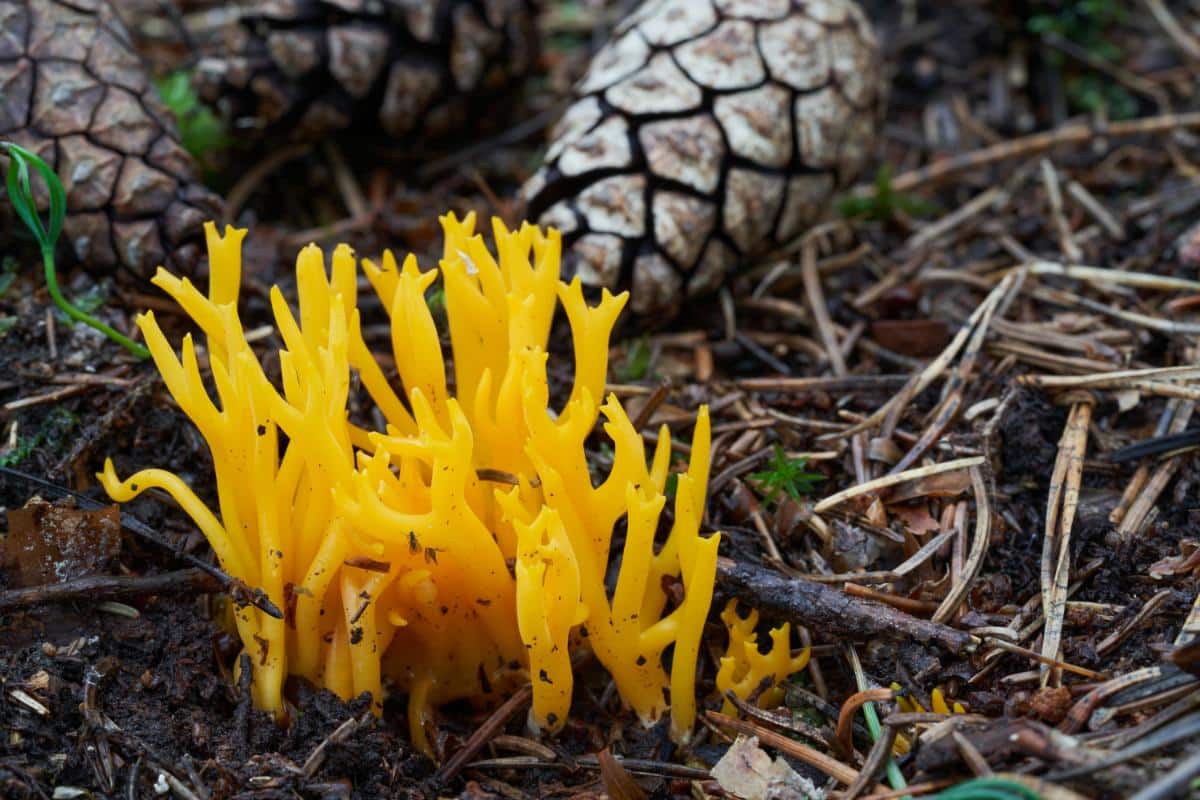
Cordyceps
Golden spindles look passingly like cordyceps, but the more common reason they get confused is that folks are really hoping they’ve found cordyceps. They both produce slender cylindrical yellow (or orange) clubs from the ground. The primary difference is that cordyceps is most likely sourcing a dead insect or larvae. Did down to see the stem base if you’re unsure.
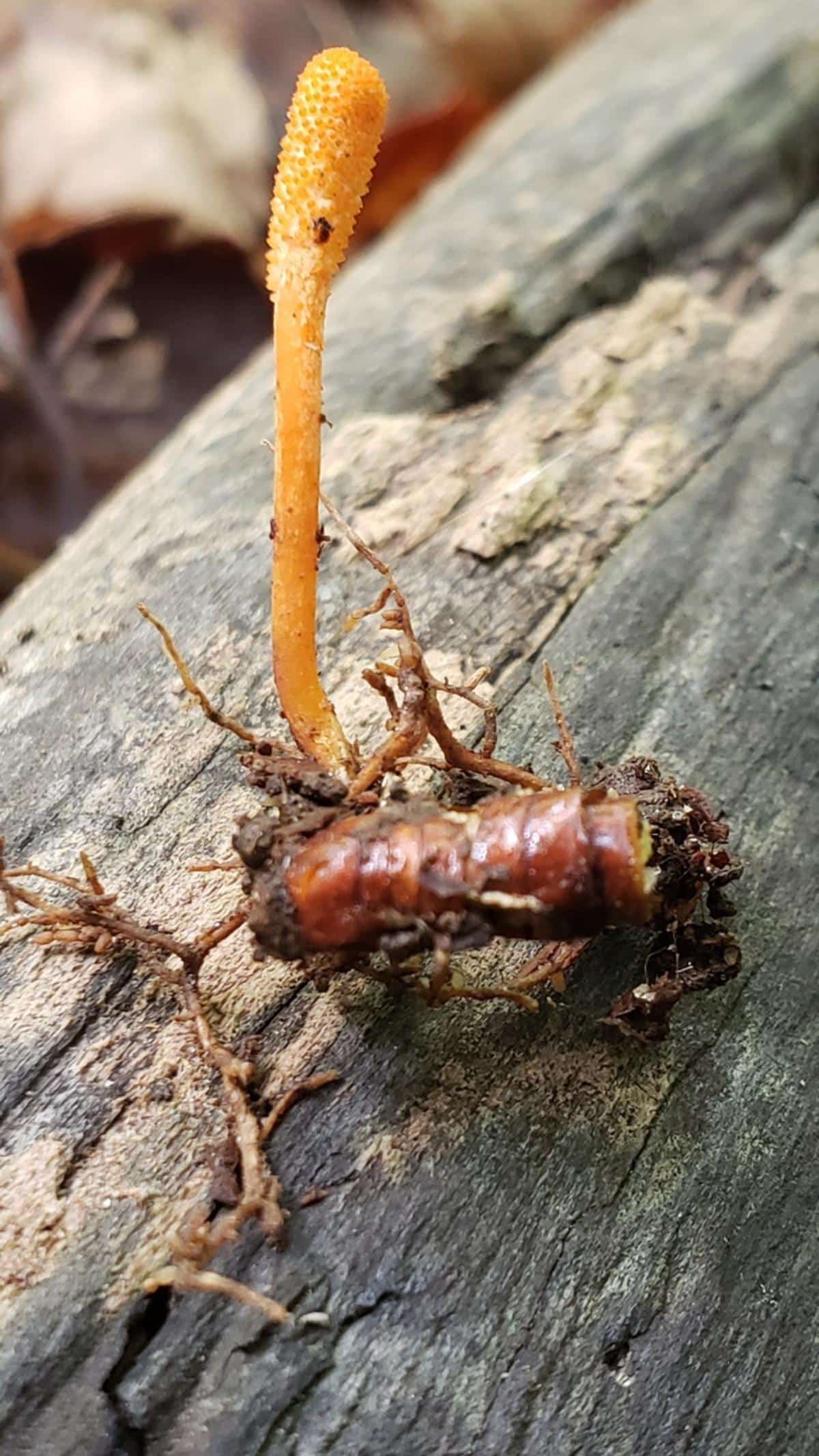
Golden Spindle Edibility
While they are not usually foraged for the table, golden spindles are edible. They are commonly collected and consumed in Nepal, where they are known locally as Kesari chyau. However, due to their bitter taste, they may not be everyone’s cup of tea.

Common Questions About Golden Spindle Fungi
Are golden spindles medicinal?
While Golden Spindles are not primarily known for their medicinal properties, research has found that extracts of this species from Japan contain anti-B red blood cell agglutinin. However, further research is needed to fully understand this species’ potential health benefits.





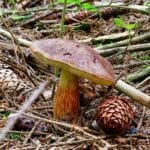
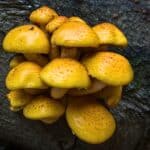
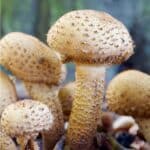
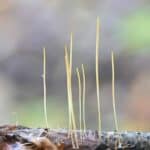
Leave a Reply